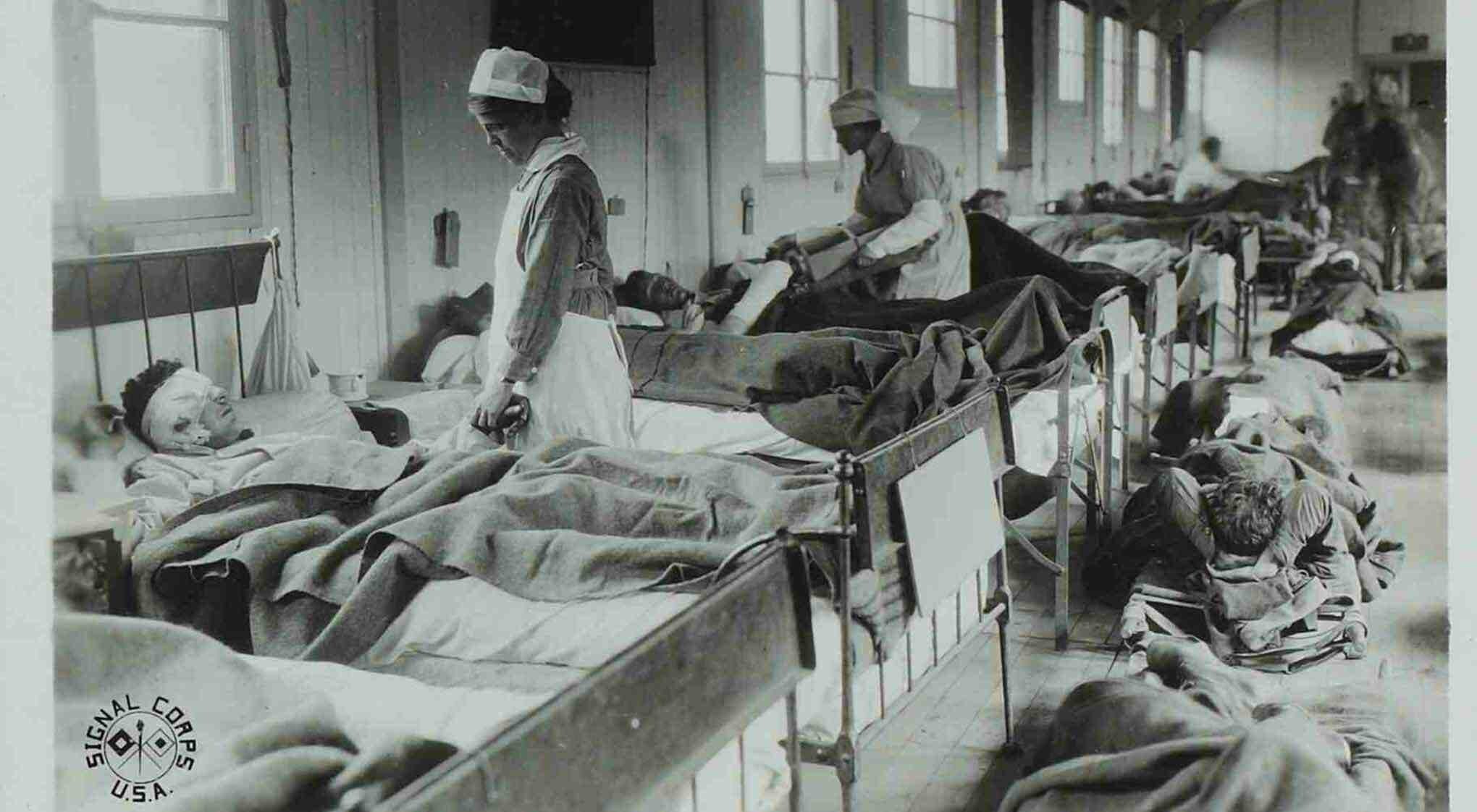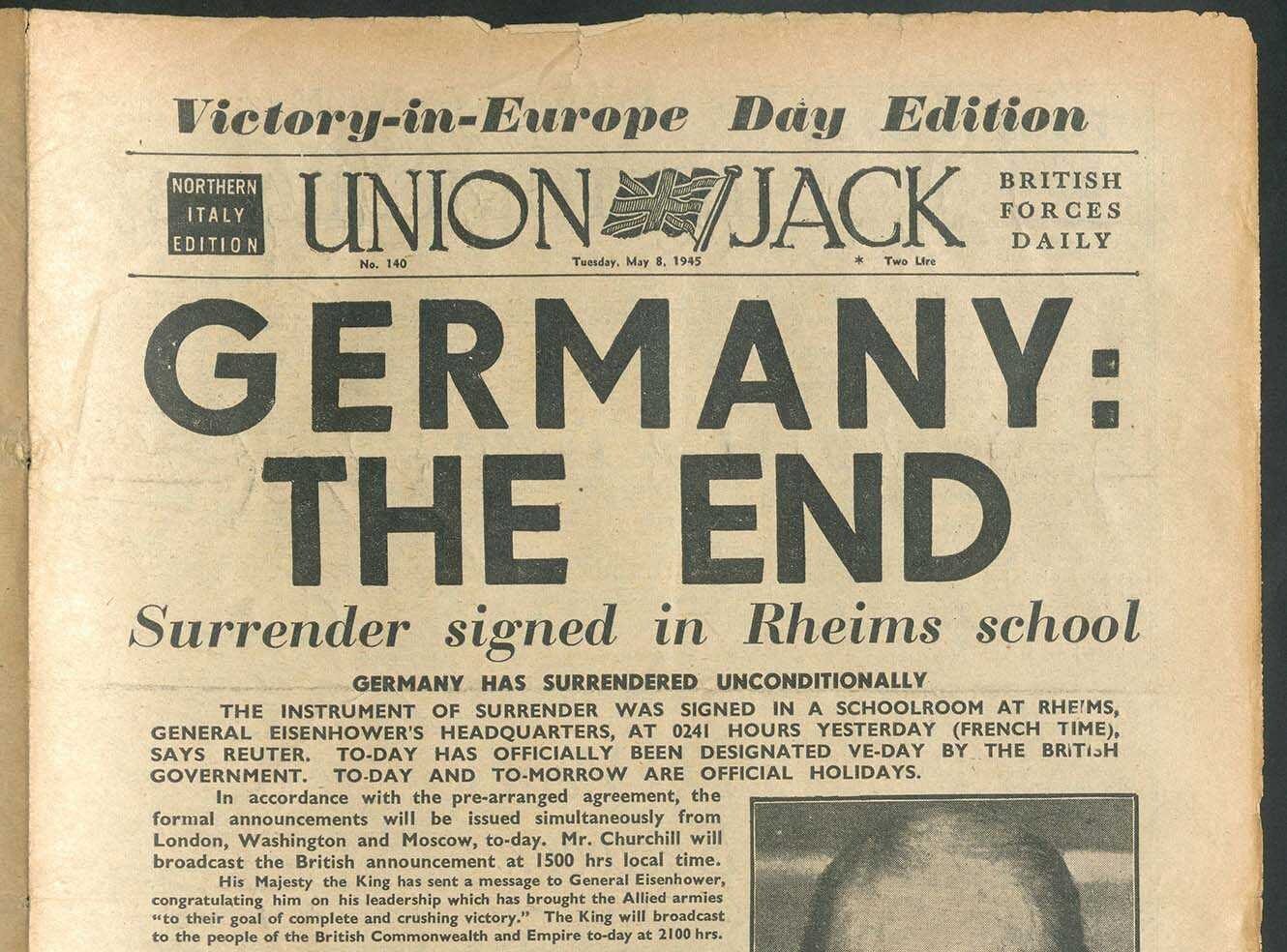First World War Portal
Rich in primary source content from world-class libraries and archives, this collection is an invaluable source for anyone studying and researching the ‘Great War’.
From personal collections and rare printed material to military files, ephemera and artwork, The First World War highlights the experiences of soldiers, civilians and governments on both sides of the conflict and in multiple theatres of war.
Covering an array of international perspectives, the resource showcases intimate personal narratives, wartime propaganda and recruitment material, the truly global reach of the conflict, and the role of women in war through various documentary and visual forms.
Highlights
- Vera Brittain's wartime diaries and letters
- Personal narratives and trench journals
- Papers of the British, French, Australian and New Zealand troops serving on various fronts
- Letters of Maori soldiers, diaries and letters of soldiers and women working in the auxiliary services
- An extensive collection of German trench papers
- Propaganda literature from various international perspectives, including North and South America and the Middle East, Australasia, Scandinavia, and Europe
- Instructions on the dissemination of propaganda and volumes detailing the effects of British and German propaganda in the US
- Government and military files, featuring material from the War Press Office in Berlin
- Visual propaganda items, such as posters, postcards and cartoons
- Recruitment booklets and training manuals
- Official and personal photograph collections depicting international forces, refugees, women's roles and life on the Home Front
- Diaries and letters covering topics such as training auxiliary services, nursing, hospital ships and religion
- Art pieces and a selection or artists' commissioning documents, featuring Pictorial Propaganda Committee Papers
- Film clips showcasing key events and themes, including the aftermath of Franz Ferdinand's assassination, medical services, propaganda and women's work
- Object photographs of weapons, equipment, vehicles, ephemera and uniforms
- British government documentation offering insight into the involvement of Britain's colonies during the war
- Memoirs, diaries and official papers relating to Russia's war and the Revolution
- Personal collections of correspondence, diaries and ephemera detailing the experiences of Canadian soldiers
- Explore relief work and medical aid provided by charitable organisations in the American National Red Cross and British Red Cross records
- Visual material from Imperial War Museums including artwork depicting a variety of campaigns, medical work, colonial troops and prisoners of war.
Modules include
| Module | Summary | Date |
|---|---|---|
| Module I: Personal experiences |
This first module brings together primary source material from multiple archives, including but not limited to; War Reserve Collection in Cambridge University Library; the Liddle Collection in the Brotherton Library, University of Leeds; the First World War collections of the Alexander Turnbull Library, National Library of New Zealand. These sources offer a rich seam of information on the lives and personal experiences of men and women during the Great War, not through official publications or newspaper accounts, but diaries, autograph books, candid snapshots, souvenirs, sketches and jottings, and other artefacts. It explores subjects such as daily life and routines in the army and auxiliary services, the trenches, food and supplies, warfare, training, discipline, camaraderie and friendship, violence and death, health and medicine and thoughts on the enemy. |
1914-1920 |
| Module II: Propaganda and recruitment |
Module II contains materials on recruitment, training, morale, public opinion, censorship and the development of different forms of propaganda during the First World War. This primary source material is drawn from multiple archives, including but not limited to; the Hoover Institution Library and Archives at Stanford University, the Bibliothek für Zeitgeschichte and the Hauptstaatsarchiv in Stuttgart and Cambridge University Library. The content in this module ranges from aerial leaflets and atrocity propaganda to international posters, postcards, cartoons and political pamphlets. Themes of recruitment, training and morale are also examined through items such as tribunal case files, Kitchener's papers, recruitment listings, training manuals and minute books of both parliamentary and local recruiting committees. |
1914-1920 |
| Module III: Visual perspectives and narratives |
This module is drawn entirely from the unparalleled holdings of the Imperial War Museum. There is a major emphasis on visual sources – photographs, artwork, posters, film clips and museum objects. Also included are substantial documentary materials – manuscript, rare printed and ephemeral sources – which help to contextualise dominant themes covered by the visual sources, such as the international dimensions of the conflict, the Home Front and the role of women in the war. |
1914-1920 |
| Module IV: A Global conflict |
The fourth module of The First World War portal is drawn from British, American and Canadian archives. It contains collections of correspondence, diaries, ephemera, posters, artwork, government records, photographs and museum artefacts that provide insights into the experiences and deployment of troops from around the world. It brings together personal collections and official papers to highlight the significant impact of the conflict on all corners of the world, far beyond the Western Front. The primary sources focus on the global nature of the war, in and beyond the European theatres. The material covers the contribution of soldiers who took part from all corners of the world, including colonial territories, and documents events and battles that occurred internationally, in the Middle East, Africa and Russia. Sources from 1918 onwards also offer an insight into the peace negotiations, post-war relief work and regeneration in Europe. |
1914-1920 |
Key data
Period covered
Source archives
- Alexander Turnbull Library, National Library of New Zealand
- Bibliothek für Zeitgeschichte, Württembergische Landesbibliothek, Stuttgart
- Bristol Central Library
- Bristol Archives
- British Library
- Brotherton Library, University of Leeds
- Cambridge University Library
- City of Westminster Archives
- Coventry History Centre
- Essex Record Office
- Glenbow Museum
- Hooge Crater Museum
- Hoover Institution Library and Archives
- Imperial War Museums
- Landesarchiv of Baden-Württemburg (Hauptstaatsarchiv), Stuttgart
- Mills Memorial Library, McMaster University
- Mirrorpix
- National WWI Museum at Liberty Memorial, Kansas City
- Northamptonshire Record Office
- Over the Top Collection
- Robert Opie Collection
- Sanctuary Wood Museum (Hill 62)
- Soldiers of Gloucestershire Museum
- The National Archives, UK
- Daily life and routines in the army and auxiliary services
- Trench warfare and conditions in the trenches
- Food, rationing and supplies
- Recruitment and conscription
- Role of dominion and colonial troops
- Chinese and South African labourers
- Hospitals and medical services
- Refugees
- Propaganda and censorship
- Entertainment
- Role of women
- The Home Front
- Prisoners of war
- Morale and dissension
- Relief work and charitable organisations
- Peace negotiations
- Demobilisation
- Post-war regeneration
- Artwork
- Cartoons and comics
- Correspondence
- Diaries and journals
- Ephemera
- Extracts from local newspapers
- Field reports and official papers
- Film clips
- Leaflets
- Manuscripts
- Military instructions
- Minute books
- Museum objects
- Newsletters
- Oral histories
- Pamphlets
- Personal narratives and reminiscences
- Photographs, both official and personal
- Postcards
- Proclamations
- Propaganda and recruiting posters
- Rare printed material
- Scrapbooks and albums
- Sheet music
- Trench literature and prison camp periodicals
- Trench maps
- Tribunal case files
- War art
- Holger Afflerbach, University of Leeds
- Maggie Andrews, University of Worcester
- Stephen Badsey, University of Wolverhampton
- Brad Beaven, University of Portsmouth
- Joan Beaumont, Australia National University
- Annette Becker, Paris Ouest Nanterre La Défense
- Mark Bostridge, Independent Scholar
- Clive Burlton, Independent Scholar
- Bruno Cabanes, Yale University
- Jane Carmichael, National Museums of Scotland
- Santanu Das, King’s College, London
- Alison Fell, University of Leeds
- Susan R Grayzel, University of Mississippi
- Toby Haggith, Imperial War Museums
- Holger Herwig, University of Calgary
- Anthony Heywood, University of Aberdeen
- Gerhard Hirschfeld, University of Stuttgart
- John Horne, Trinity College Dublin
- Kate Hunter, Victoria University of Wellington
- André Lambelet, Quest University, Canada
- Vejas Gabriel Liulevicius, University of Tennessee, Knoxville
- Sue Malvern, University of Reading
- Siân Nicholas, University of Aberystwyth
- Philippe Oosterlinck, Hooge Crater Museum
- Robert Opie, Museum of Brands, Packaging and Advertising
- Robin Prior, University of Adelaide
- Sophie De Schaepdrijver, Penn State University
- Adam Seipp, Texas A and M University
- Gary Sheffield, University of Wolverhampton
- Heather Streets-Salter, Northeastern University
- Jonathan Vance, University of Western Ontario
- David Welch, University of Kent
- Jay Winter, Yale University
- David R Woodward, Marshall University West Virginia
- African Studies
- War and Conflict
- Eye-catching and innovative interactive maps, included animated maps of different theatres of war and key battles
- Digitised artefacts such as medical items, weaponry, uniforms and personal items viewable in a 360° format
- Virtual walk-through and 360° panoramas of the Sanctuary Wood Trench System in Ypres Salient
- Oral histories with accompanying transcriptions
- Extensive visual galleries and artwork feature
- Thought-provoking ‘Memory Wall’ of personal narratives
- Great War glossary
- Contextual essays, written by academics and collection specialists
- Illustrated chronology
- Case studies
- Directories of key search terms in several European languages, including French, German and Italian




